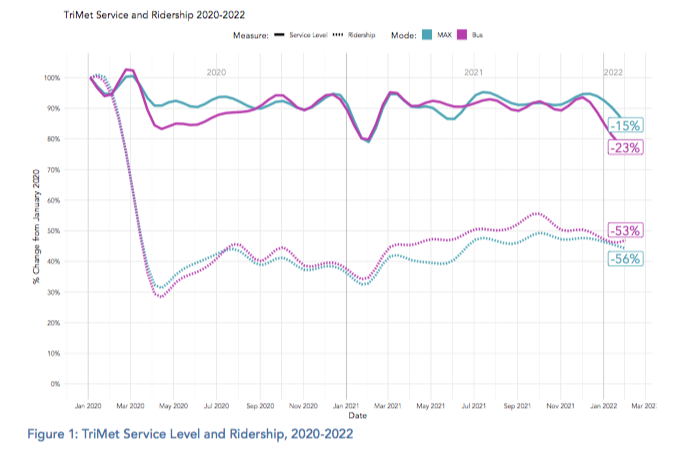
With all those trees in the way, it can be really easy to miss the forest. So, last week, when TriMet released its Forward Together Draft Service Concept, many people, myself included, made a beeline to our neighborhood bus, and then immersed ourselves in the tangle of other nearby routes
Meanwhile, staring the reader in the face, and probably going unnoticed, was the fact that TriMet did not write this report. The document was the work of the Jarrett Walker + Associates, a Portland-based transit consulting company with a long list of clients from around the world.
But even if you missed the name, the tone of the writing was a tip-off. This document was different from the usual TriMet work product, and the consultants have brought a fresh eye and frankness to the project of a post-pandemic reorganization of TriMet service.
In Portland: Turning the Dial Toward Equity (How Far?), a recent blog entry on the firm’s website, Jarrett Walker himself talks about their TriMet project and the questions about what future service should look like. He asks, “And as we look at how much to invest in equity, we have a big question for the community to think about: How much redistribution of service toward lower-income areas should we do?” He then introduces the reader to trade-offs to consider, and makes the point that
The Service Concept we’ve released is just that, a concept. It is not even a proposal, and it’s certainly not a recommendation. We are not saying that we have it right. We are putting it out there to start a conversation.
Toward that end, TriMet has a short survey they would like you to take, and also several open houses this month.
In addition to the primary report, there are a couple of documents which will interest readers who want a deeper understanding of Portland’s transit challenges.
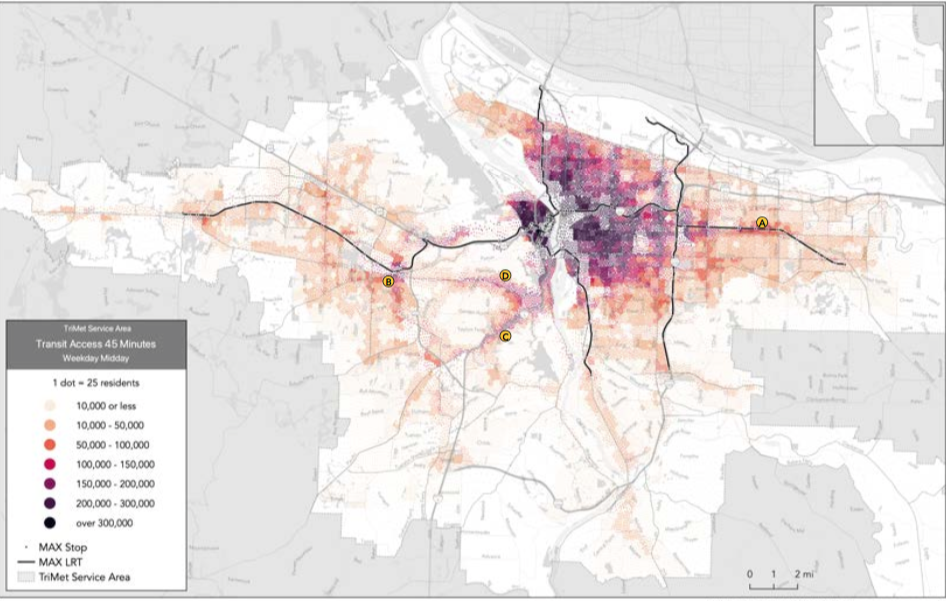
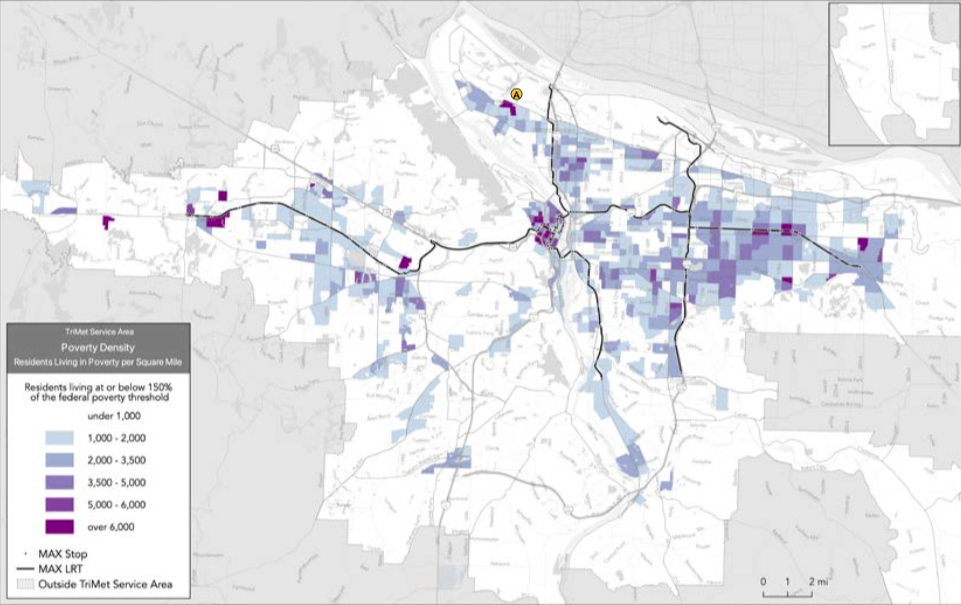
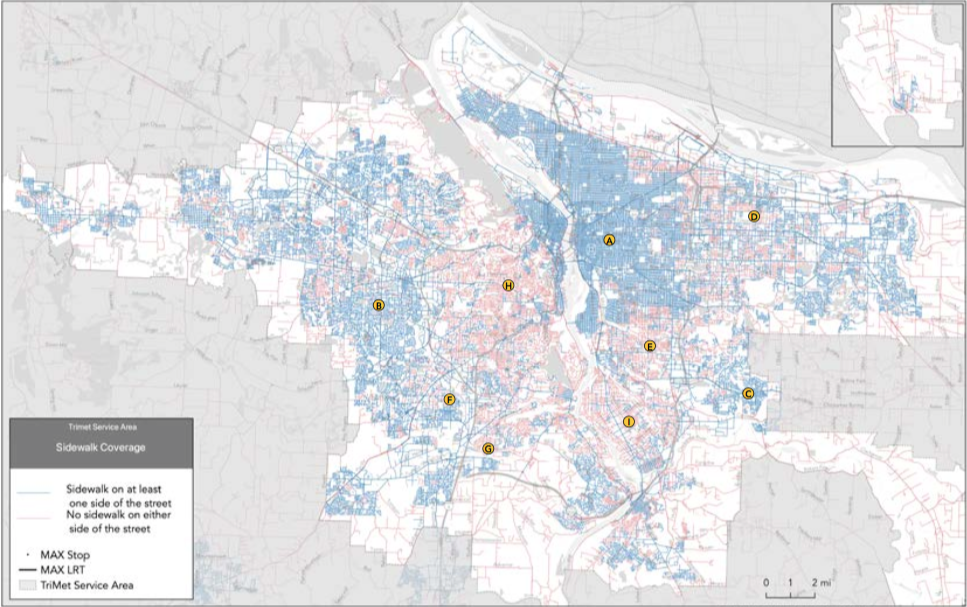
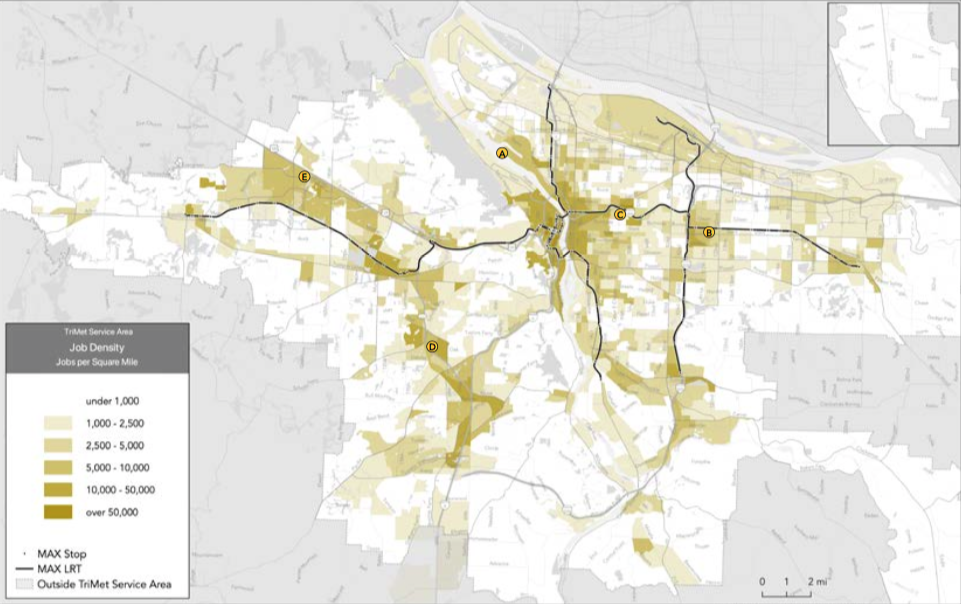
The Transit Existing Conditions Report is an incredible resource. It begins as a primer on transportation networks, and includes explanations of basic principles like the Ridership/Coverage trade-off. About a quarter of the way in, though, the document transforms into a fantastic book of maps. Even if you don’t want to read anything, scroll through them. Above are a few.
The Technical Memorandum from the Portland-based Parametrix consultants organizes transit trends into two time periods, before and after the pandemic, and also compares trends in Portland to regional and national trends. They look at gentrification, ride hailing services, congestion, road safety, driver shortages and declining transit ridership. Much of this will not be completely new information for readers who follow transportation news closely, but it was helpful to have all of it in one place, concisely reported, and with the local to national comparisons. Also, they cite sources, with links, which makes this report a valuable resource.
One fun tidbit was the local working trends by employer, compiled from employers surveyed in February and March, 2022 (pages 15-17). At Kaiser Permanente, 95% of administration was working from home; OHSU had 55% of employees working remotely; and at PGE 65% were remote. It also touched on the issues of safety, adopted driving habits and hybrid schedules.
In short, if you love the Portland area and are a transit nerd, these documents are a treasure-trove.



